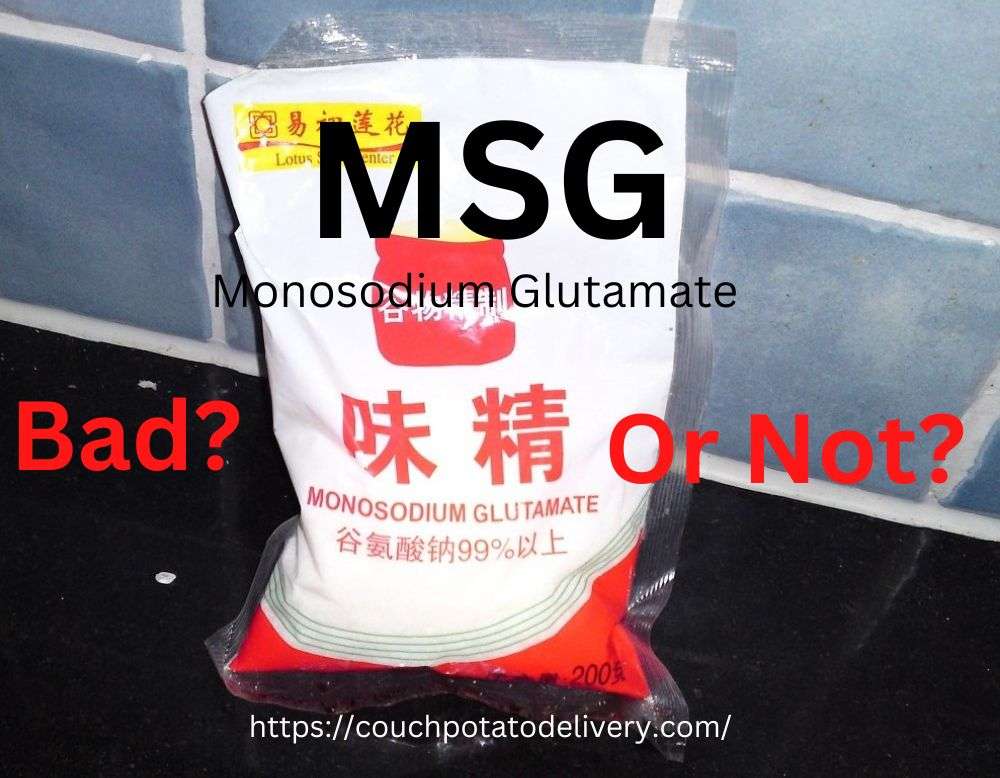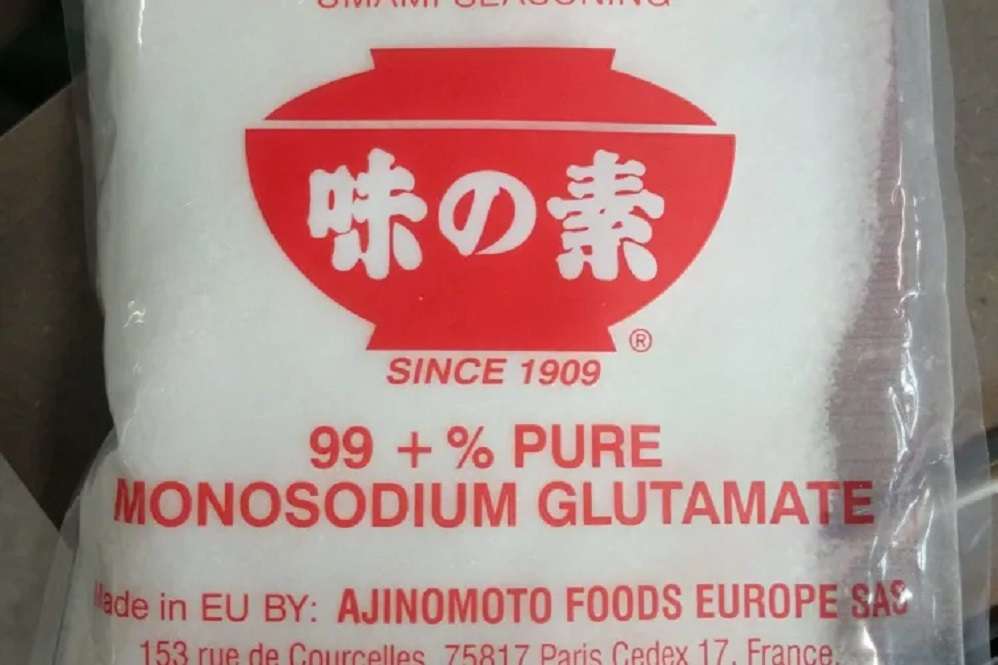
MSG – Monosodium Glutamate is a flavor enhancer that has been used for over a century.
It is a common food additive in Chinese recipes, canned vegetables and soups, and other processed goods, in addition to being naturally present in certain foods.
Although many people associate it with Asian cuisine, it is used in many foods, including processed meats, soups, snacks, and fast food.
“MSG has long been regarded as a dangerous ingredient. However, newer research calls into question the integrity of its alleged adverse effects on human health.”
Table of Contents
What is MSG?
Monosodium glutamate (MSG) is one of today’s most common food additives. However, there is still much discussion over whether or not it is good for us.
According to the US Food and Drug Administration (FDA), MSG is classified as a food ingredient that is generally recognized as safe.
MSG is a transparent powder that is white, odorless, and commonly used as a food additive. It’s known as E621 in the food industry. It easily dissolves in water, separating into sodium and free glutamate.
It’s a flavor enhancer made from L-glutamic acid, which is found naturally in many foods. L-glutamic acid is a non-essential amino acid, which means that your body can produce it on its own and does not require it from food.
It is produced by fermenting carbohydrate sources such as sugar beetroot, sugar cane, and molasses.
There is no chemical distinction between glutamic acid found naturally in some foods and glutamic acid found in MSG. This means that your body is cannot distinguish between the two types.
MSG has a distinct flavor known as umami, which is the fifth basic taste after sweet, sour, salty, and bitter. Umami has a meaty flavor that is associated with the presence of proteins in food.

Other umami additives besides MSG include inosine 5′-monophosphate (IMP) and guanosine 5′-monophosphate (GP).
MSG’s flavor-enhancing properties are because of its umami taste, which stimulates salivary secretion.
Umami flavors water your mouth, which can enhance the taste of food.
Furthermore, research indicates that umami substances can reduce the desire to salt foods. Another flavor enhancer is salt.
“MSG can also be used as a salt substitute in low-sodium foods such as soups, prepackaged meals, cold meats, and dairy products.”
Indeed, some research suggests that replacing some salt with MSG can reduce sodium intake by about 3% without compromising flavor.
Video
Sometimes a video can explain it better than I can.
Why do People think MSG is Harmful?
Even though the FDA states that MSG is “generally recognized as safe,” it remains a controversial ingredient. This is partly due to a long-standing stigma against it and a lack of conclusive data about it.
If you’ve ever heard the phrase “an MSG attack,” it refers to symptoms that are sometimes said to happen after ingesting MSG.
The first mention of these symptoms was made in 1968. They are as follows:
- Headaches/Migraines.
- Vomiting / Nausea.
- Tingling.
- Loss of feeling/sensation.
- Flushing.
- Palpitations.
- Grogginess.
Research has proven only a few people are sensitive to MSG. This sensitivity is known as the ‘MSG symptom complex.‘ Even for people who suffer from this complex, the symptoms are short-term and disappear in about an hour.
Furthermore, according to the FDA, such side effects are most likely to occur after a person with MSG sensitivity consumes 3 grams or more of MSG without food. That is unlikely in and of itself, given that most people consume MSG through food, and most foods have less than 0.5 grams of added MSG.
To put it another way? MSG is still widely regarded as safe in moderation — and most foods you buy, even the ones in my meal delivery category in the menu, contain it. However, it contains only trace amounts.
How to Know you are Sensitive to MSG
Most people just assume that they are reacting to MSG when it is something else entirely.
MSG can be found in fast food, snack foods, seasoning blends, instant noodles, and frozen meals.
These same foods are all highly processed and can cause flushing, headaches, or a change in blood pressure due to your body’s reaction to high salt content and other ingredients.
“So it’s possible that it’s not the MSG that’s making you sick, but the fact that you’re eating foods that are already highly processed, fried, high in sodium, and so on.”
Alleged Long-Term Effects of MSG
It is essential to know that insufficient scientific evidence proves these claims are invalid. Some of these claims include
Brain Damage
The idea that MSG can cause brain damage stems from a 1969 study examining the effects of inserting large amounts of MSG into newborn mice.
According to the researchers, MSG causes neuronal cell death in several developing brain areas. MSG was found to negatively affect the hypothalamus, which is essential for maintaining homeostasis.
However, injecting large amounts of MSG into newborn mice cannot be compared to the effects of humans consuming small amounts of MSG from food into their gastrointestinal tract.
As a result, this research does not offer sufficient evidence to support this claim.
Cancer
Historically, some people believed that MSG consumption increased the risk of cancer.
However, according to a 2017 systematic review, no studies have proven this link since the 1960s.
Obesity
Some people think that MSG can cause obesity.
One 2011 study involving over 10,000 Chinese adults concluded that MSG caused weight gain even when they engaged in physical activity or did not eat processed foods.
However, according to a 2010 study, MSG does not contribute to obesity.
It is worth noting that because MSG improves food taste, people may be more tempted to overeat.
A 2017 systematic review supports this theory as well.
Asthma
Some people have reported having asthma attacks after consuming MSG.
In one older study from 1987, the researchers claimed to have given large doses of MSG to 32 people, and 40% of them developed asthma later.
Recent studies, however, have found no connection between asthma and MSG consumption.
A 2012 study researched the link between MSG, diet, and asthma in adults, and another study examined the connection between MSG and asthma in adults and children. Both researchers found no connection.
It is also worth noting that high-dose MSG studies may not be reliable in a real-world setting. According to the FDA, it is not likely that a person will consume enough MSG in food to cause adverse reactions.
Benefits of MSG
The main advantage of MSG is that it enhances the flavor of food. MSG has been studied for its effects on taste, with one study finding that the additive increased the “pleasantness” of a soup.
How to tell if your food has MSG?
Because of the ongoing debate over MSG, the FDA requires it to be listed on the labels of processed foods that contain it.
However, processed foods with natural MSG do not need to specify that they contain MSG.
MSG is present in processed foods that have one of these naturally occurring ingredients:
- Yeast extract.
- Hydrolyzed yeast.
- Soy extracts.
- Protein isolate.
- Hydrolyzed vegetable protein.
- Autolyzed yeast.
Common foods that contain MSG are:
- Animal-based protein: Beef, chicken, mackerel, salmon, crabs, scallops, and shrimp.
- Cheese: Emmenthal, Parmesan, Roquefort and Cheddar
- Vegetables: Cabbage, tomatoes, broccoli, green peas, mushrooms, and spinach
- Processed meats: bacon, pastrami, sausages, pepperoni, and salami
- sauces & dressings: Ketchup, mayonnaise, soy sauce, salad dressings, and barbeque sauce
- Packaged foods: canned soups, frozen meals, potato chips, crackers, canned tuna, and flavored snacks
- Condiments and spices: seasoning blends
Furthermore, fast-food restaurants such as McDonald’s, Chick-fil-A, and KFC use MSG to season menu items such as fried chicken, chicken nuggets, and fries.
Monosodium Glutamate – My Conclusion
MSG is found naturally in food and the body. Some food manufacturers, such as fast food restaurants, use it to enhance flavor.
According to many reputable organizations worldwide, including the FDA, MSG is safe to eat.
Before purchasing processed foods, it is best to read the labels. If you go out to eat, you can request that the MSG be removed from your dish. But keep in mind that without it, your meal may lack the umami flavor you’d expect.
If you have negative side effects after consuming MSG-containing foods, you should avoid them.
Most people, however, can rest assured that MSG is not the toxic ingredient it was once thought to be.
There’s no reason to avoid small amounts of MSG in your diet, so enjoy eating your food without fear!
